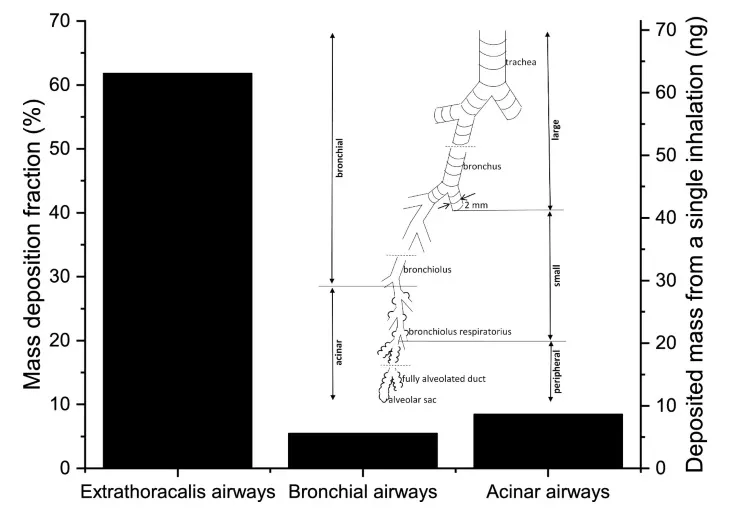Hungarian researchers have demonstrated that SARS-CoV-2 virions causing pneumonia originate from the upper airways of the same patient. The work has been performed in a collaboration between the researchers of the ELKH Centre for Energy Research, the ELKH Wigner Research Centre for Physics, the Semmelweis University and the County Institute of Pulmonology in Törökbálint. The study has recently been published in Scientific Reports. Based on the research it is very unlikely that virions directly reach the lungs, even if one inhales the air coughed out by a patient with COVID-19. The process leading to pneumonia can be divided into two phases. In the first phase, only the upper airways get infected. Then virions multiplied there and getting deeper cause pneumonia in the second phase. The authors point out what we can do at the beginning of the disease to avoid the worsening of the symptoms. These actions do not replace but can complement the present preventive measures, which focus on the first phase of the process.
One of the features of the COVID-19 pandemic is that the course and severity of the disease are very diverse. They strongly depend on the location of the cells which are infected by SARS-CoV-2 virions. Typical mild symptoms like coughing or the loss of smell and taste suggest an upper respiratory infection. Virions must get much deeper in order to cause pneumonia.
Therefore, it was important to investigate, where the virions go if we inhale air that originates from the cough of a patient with COVID-19. The authors of the study applied a computational model, which determines the deposition of virus carrier particles. Simulations showed that it is very unlikely that due to one inhalation a single virion reaches the deeper parts of the lung, because most of the virions deposit in the nasal and oral cavities, and in the throat.
This finding is in agreement with the clinical observation that COVID-19 pneumonia is preceded by upper respiratory symptoms. Based on this, the process leading to pneumonia can be divided into two phases. In the first phase, only the upper airways get infected. Then virions multiplied there and getting deeper cause pneumonia in the second phase. It means that those SARS-CoV-2 virions that cause pneumonia originate not from elsewhere but from the upper airways of the same patient.

Mass deposition fraction of inhaled particles (left axis) and deposited mass from a single inhalation (right axis) in the extrathoracic, bronchial and acinar regions of the lungs upon exposure to cough-generated droplets and aerosol particles. The insert shows the subdivisions of the intrathoracic airways
Can we do anything during the first phase to avoid the worsening of our symptoms? First of all, it is important to decrease the virus concentration in the air around us, which can be increased by our own cough. Therefore, frequent ventilation of the room and absorbing our own cough with a tissue is recommended even if we are alone at home. Virions in our upper airways can infect not only the upper airways of someone else, but also our own lungs. In addition to that, the risk of clinical deterioration of the disease can be decreased by any agent applicable in the upper airways that reduces the viral load directly in the mucosa. These actions do not replace but can complement the present measures, which focus on prevention of the first phase of the process.
Further research is required to understand how virions reach the lungs from the upper airways. In addition, the team would like to study how the breathing mode affects the airway deposition of SARS-CoV-2, which can be particularly important with regards to the spread of COVID-19 among athletes and manual workers.
Further information:
Madas, B.G., Füri, P., Farkas, Á., Nagy, A., Czitrovszky, A., Balásházy, I., Schay, G.G., Horváth, A., 2020. Deposition distribution of the new coronavirus (SARS-CoV-2) in the human airways upon exposure to cough-generated droplets and aerosol particles. Scientific Reports. 10, 22430.